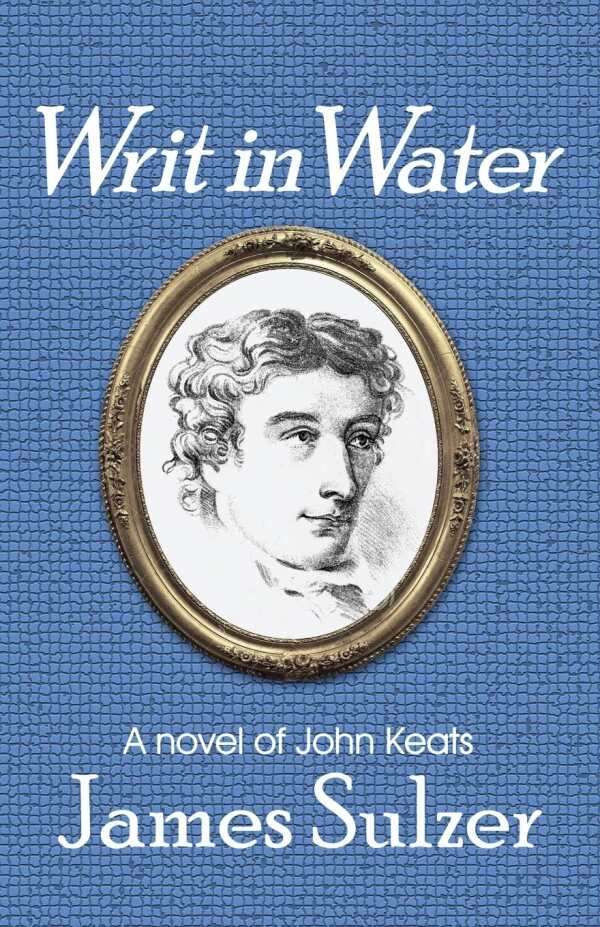Writ in Water
A Novel of John Keats
The accomplished biographical novel Writ in Water covers John Keats’s life with insight and understanding.
James Sulzer’s elegiac novel Writ in Water begins as British poet John Keats dies at the age of twenty-five. Accompanied by a nightingale into a nebulous ether, he revisits scenes from his short, unfinished life.
The first part of the book takes place in the shadowed realm of recent death. Soon, shadows give way to scenes that Keats recognizes as memories. Keats recalls how he, who was orphaned as a teenager, was forced to surrender his siblings to the punitive care of a lawyer. A single sharp memory of his sister’s pleas for rescue triggers guilt and harsh self-judgement. He also remembers how, while he pursued his writing, he was wracked with self-doubt; he wonders if vanity and the need for accolades drove his choices. And his love for Fanny Brawne is revisited in terms of his delays in their relationship, as he hoped to offer her a more secure future. The right day never came, and his poems were shunned, contributing to his profound sense of failure.
The nightingale does not recognize Keats’s memories as such; instead, it captures and describes the feelings they arouse in Keats. That the nightingale is given co-authorship of the tale underscores the important place that the birds held in Keats’s imagination and poetry; the device also gives the book dimension, as the avian observer views events from a different perspective.
Keats’s senses of passion and yearning are carried by the book’s Romantic era sensual language and startling images. The book likens his death to the collapse of a flimsy dove’s nest. Soaring above the earth, the nightingale sees the ground below crack open and hatch news from Keats’s youth. Such elaborate imagery is used judiciously, resulting in poignancy. The book’s characterizations are less florid: Keats portrays Fanny as a bright star, and their initial meeting is marked by vivacity and promise as Fanny teaches Keats how to crack and extract a walnut from its shell.
As the book moves toward its end, and Keats and the nightingale sense that their time is drawing to a close, an unseen force propels Keats to seek the universe’s final judgement of his life. The late introduction of a universal judge shifts the focus away from Keats, seeming to trivialize the poet’s life by turning his story into a lackluster morality tale. Gigantic scales materialize to measure good deeds and bad, though the book previously took pains to show Keats as a sensitive and decent man who was beset by bad luck and poverty. Still, the book regains momentum as it soars to a luminous conclusion.
The accomplished biographical novel Writ in Water covers John Keats’s life with insight and understanding.
Reviewed by
Susan Waggoner
Disclosure: This article is not an endorsement, but a review. The publisher of this book provided free copies of the book and paid a small fee to have their book reviewed by a professional reviewer. Foreword Reviews and Clarion Reviews make no guarantee that the publisher will receive a positive review. Foreword Magazine, Inc. is disclosing this in accordance with the Federal Trade Commission’s 16 CFR, Part 255.

